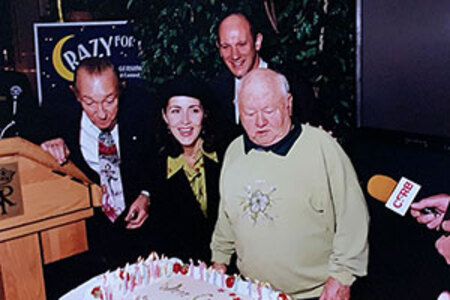While We Wait...
I’d consider myself a craft dabbler. I try a lot but tend to lose interest quickly, leaving many unfinished projects in my wake. My skills haven’t advanced much in any particular medium but I have an abundance of materials, tools, and very basic skills for when inspiration strikes, or a global pandemic confines you to your home. Anyway, knitting was one of the first crafts I got into and is probably the one that has produced the greatest number of unfinished projects and leftover materials. I’m not a good knitter and I have no idea how I have accumulated the amount of yarn that I have, but it’s immense, and currently bulging out of a cupboard in my living room that no one is allowed to open. There’s not enough of any one type to really make anything, so I just keep pushing that door closed, unwilling to get rid of it no matter how annoyed my husband becomes. “It might be useful for something!”, I tell him.
When I discovered the punch needle I was immediately vindicated over my yarn hoarding because punch needle takes virtually no skills, uses up all kinds of yarn, and works up so fast that I never lose interest in a project. My daughter Eloise even has a project going — it’s that easy. So if you like the look of knitting but not the time commitment or skill required you should read on.
Punch needle is a type of embroidery needle that allows you to use yarn to make a variety of artworks, pockets, purses, pillows, toys, and rugs. The options are endless. The suggested backing for this type of embroidery is monk’s cloth but you can also use linen, wool or burlap and I’ve been experimenting with other second-hand fabrics I’ve collected over time that have a similar weave. I’ve also read that you can use fabric scraps instead of yarn to punch with but I haven’t tried that yet.
Here are a few of the pieces I’ve made using leftover yarn from my stash. Both sides look great so it’s up to the maker to decide which to display. One is more like a shag carpet, and one is flat.
If you want to try punch needle you’ll need:A punch needle (I use an Oxford brand size 10 that I purchased from Bookou.ca)
-
- Yarn in various colours
- Backing material such as linen, wool, burlap, or monk’s cloth.
- Old wooden frame or locking embroidery hoop
- Staple gun or tacks
- Darning needle
Let's get started!
Step 1 – Stretch your fabric around the wooden frame until it’s taut like a drum and staple or pin it into place with tacks. This takes a bit of elbow grease and you might want to ask for a helping hand to get it as tight as you can.
Step 2 – Draw your design using a marker of any kind (it’ll get covered later).
Step 3 – Thread your punch needle with yarn of your choice and start working. Size 10 has worked for all of my remnants and you can double up the yarn if it’s too thin.
Step 4 - When you’re done, take it off your frame, roll up the raw edges, and sew them into place using a blanket stitch or for a speedier process, you can just sew another material to the back using a sewing machine or hand stitch.
Check out this link for more detailed information and tutorials.
There’s also a ton of tutorials and inspiration online. My favourite is @Bookou on Instagram which is where I discovered this craft and purchased my materials when I first tried it out.
My favourite part about punch needle is the ability to take discarded yarn and fabric scraps and make them into something beautiful. Second-hand shops and many grandmothers’ houses have remnant wool available. Wouldn’t it be great to save it from a landfill while making yourself a wonderful new throw pillow! If you give it a go, remember to let us know.
Now, crafting isn’t everyone’s jam. My dear friend and long-time colleague Sarah Sisko does not share my love of craft but what we do share is pandemic-induced crippling anxiety and a great desire to break free of its clutches. Sarah has found a place in her home where the fear does not follow, and that place is her kitchen. In search of a coping strategy, Sarah has found so much more. Read her story, it’s a good one.












